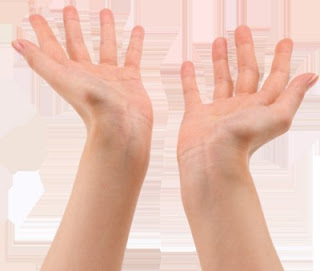Hands images - A hand is a prehensile, multi-fingered organ located at the end of the forearm or forelimb of primates such as humans, chimpanzees, monkeys, and lemurs. A few other vertebrates such as the koala (which has two opposable thumbs on each "hand" and fingerprints remarkably similar to human fingerprints) are often described as having "hands" instead of paws on their front limbs. The raccoon is usually described as having "hands" though opposable thumbs are lacking.
|
attention: all images contained
on this page does not belong to this blog, the images used for information
purposes only. If you are the owner of the image below and do not like the
picture shown, please contact us and we'll remove it immediately. Thank you
|
Hands Images
Fingers contain some of the densest areas of nerve endings on the body, and are the richest source of tactile feedback. They also have the greatest positioning capability of the body, thus the sense of touch is intimately associated with hands. Like other paired organs (eyes, feet, legs) each hand is dominantly controlled by the opposing brain hemisphere, so that handedness—the preferred hand choice for single-handed activities such as writing with a pencil, reflects individual brain functioning.
Some evolutionary anatomists use the term hand to refer to the appendage of digits on the forelimb more generally — for example, in the context of whether the three digits of the bird hand involved the same homologous loss of two digits as in the dinosaur hand.
The human hand has five fingers and 27 bones, not including the sesamoid bone, the number of which varies between people, 14 of which are the phalanges (proximal, intermediate and distal) of the fingers. The metacarpal bones connect the fingers and the carpal bones of the wrist. Each human hand has five metacarpals and eight carpal bones. Among humans, the hands play an important function in body language and sign language.
































No comments:
Post a Comment